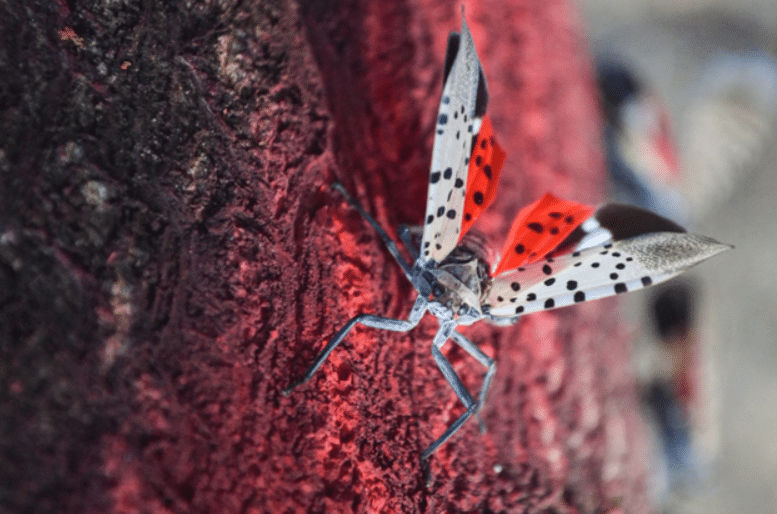It may seem a strange way to become a hero, but in New York, killing spotted lanternflies has achieved that status.
But what is a spotted lanternfly, and why has it earned the ire of the ordinarily unflappable New Yorkers? Let’s break it down.
What is a spotted lanternfly?
The spotted lanternfly (Lycorma delicatula) is a planthopper. Planthoppers are “true bugs,” meaning they are part of the order Hemiptera. They live and feed on plants, and they are strong jumpers.
With spread wings, many people mistake the spotted lanternfly for a colorful butterfly or moth. However, they are actually a planthopper species indigenous to parts of China and Vietnam. Its preferred host is a tree of heaven (Ailanthus altissima), but it infests crops, including soybeans, grapes, stone fruits, and crab apples. Parasitic wasps regulate spotted lanternfly populations in their native habitat.
During their life cycle, spotted lanternflies go through four wingless growth stages (instars) before becoming adults. After hatching, the tiny nymphs are black with white spots in the first three instars. In the fourth, they become red and black with white spots and are about 1.5 cm long.
Spotted lanternflies are univoltine, meaning that a generation lasts for one year. They hatch in May and are active until December. Their eggs survive through the winter into the following year.
How do spotted lanternflies damage plants?
Spotted lanternflies were first spotted in the US in 2014. They began to swarm New York City every summer since 2020. They have likewise become a nuisance across the Northeast, Mid-Atlantic, and Midwest. They pose no risk to humans, but lanternflies can damage agricultural crops, particularly grapevines, by sucking sap.
Additionally, planthoppers produce honeydew, a sugary liquid attractive to other insects such as wasps, ants, and bees. It can also cause sooty mold to grow on the plant on which it is deposited. This fungal disease inhibits the plant’s ability to create the…
Read the full article here

Leave a Reply